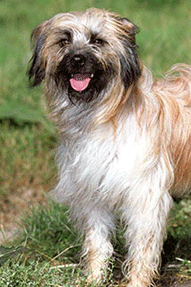Saint Bernard (St. Bernard)

Saint Bernard
St. Bernard
Basic Information
- Category: Dog
- Origin: Saint Bernard
- Body Type: Large
- Height: 61-71 cm
- Hair Length: Long hair
- Lifespan: 8-10 years
Ratings
| Trainability | ⭐️⭐️⭐️ |
| Affection Level | ⭐️⭐️⭐️⭐️ |
| Barking Level | ⭐️⭐️⭐️ |
| Shedding Level | ⭐️⭐️⭐️ |
Breed Introduction
The Saint Bernard has been in shelters for three centuries, and it is estimated to have saved the lives of 2,000 people. Although the construction of a train tunnel traversing the Alps has greatly reduced the number of people hiking or traveling through the Saint Bernard Pass, monks continue to raise Saint Bernards as companions to honor the tradition of the shelter.
The Saint Bernard is a representative of large dogs, a native watchdog from Switzerland, which began to be bred at the Saint Bernard monastery in Switzerland after 1700 to form its own type. The Saint Bernard is a descendant of the Alpine Mastiff brought by the Roman army when it passed through Switzerland and was once a short-haired and aggressive breed. At one point, it was nearly extinct but was likely revived by utilizing the lineage of Newfoundland dogs and Great Danes.
There is a saying that in 1800, it led Napoleon’s armies through the pass, which made this dog (then known as the Barry dog) famous throughout Europe in the 19th century. The legendary dog ‘Barry’ became the epitome of rescue dogs. The direct ancestors of the Saint Bernard were common large farm dogs in the area. After several generations of breeding according to established standards, this breed was developed into what is known today. Heinrich Schmizel of Holigen near Bern was the first to publish a pedigree document for it in 1867. In February 1884, the registration of Swiss purebred dogs began. The first registered Saint Bernard was ‘Leon’, and the next 28 registrations were also related to the Saint Bernard. On March 15, 1884, the Swiss Saint Bernard Club was established in Basel. At the International Dog Congress on June 2, 1887, the Saint Bernard was officially recognized as a breed from Switzerland, and the congress also issued breed standards as constraints. Since then, the Saint Bernard has been regarded as Switzerland’s national dog.
The development of the Saint Bernard originated in the 11th century when monks built a hospice at the altitude of 2449 meters at the Great St. Bernard Pass for travelers and pilgrims. There, large mountain dogs have been used for guarding and protection since the 17th century. Starting in 1695, there have been illustrations of this dog, and in 1707, there was already written documentation about it in the hospice. This dog was then used as a companion dog and specifically for rescuing travelers lost in the snow and fog. The book ‘White Death’, published in multiple languages, recounts many life-saving incidents involving this dog.
There is a saying that in 1800, it led Napoleon’s armies through the pass, which made this dog (then known as the Barry dog) famous throughout Europe in the 19th century. The legendary dog ‘Barry’ became the epitome of rescue dogs. The direct ancestors of the Saint Bernard were common large farm dogs in the area. After several generations of breeding according to established standards, this breed was developed into what is known today. Heinrich Schmizel of Holigen near Bern was the first to publish a pedigree document for it in 1867. In February 1884, the registration of Swiss purebred dogs began. The first registered Saint Bernard was ‘Leon’, and the next 28 registrations were also related to the Saint Bernard. On March 15, 1884, the Swiss Saint Bernard Club was established in Basel. At the International Dog Congress on June 2, 1887, the Saint Bernard was officially recognized as a breed from Switzerland, and the congress also issued breed standards as constraints. Since then, the Saint Bernard has been regarded as Switzerland’s national dog.






